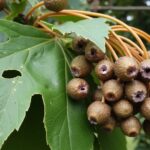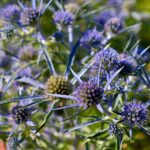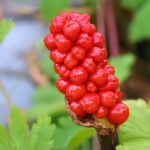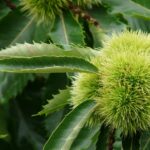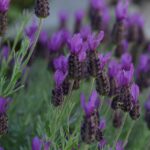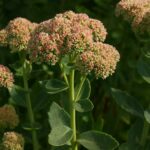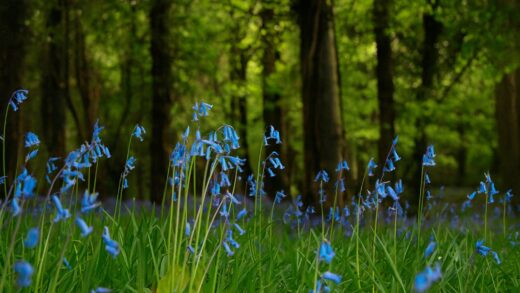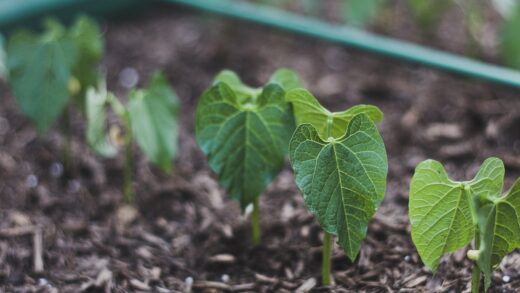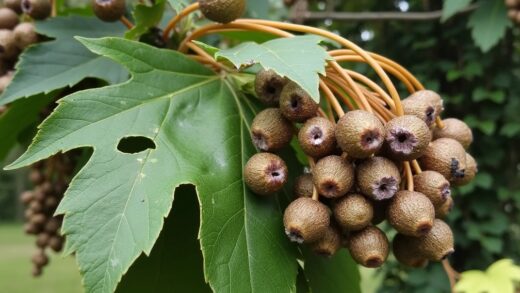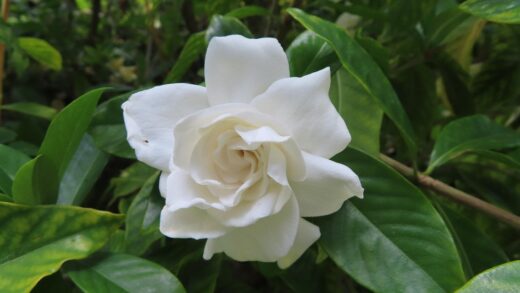Successfully planting and propagating white mistletoe is a fascinating horticultural endeavor that diverges completely from conventional gardening practices. It is not a process of sowing seeds in soil, but rather of carefully initiating a parasitic relationship between the mistletoe and a suitable host tree. The fundamental key to success lies in mimicking the natural dispersal method, which primarily involves birds. Birds consume the white, sticky berries and either wipe the seeds onto a branch or excrete them, where the adhesive pulp, known as viscin, glues the seed firmly to the bark. Understanding and replicating this simple yet elegant natural mechanism is the very essence of cultivating this unique plant.
The entire process hinges on bringing a viable seed into direct, secure contact with the bark of a compatible host tree. The choice of the host is non-negotiable; white mistletoe has a defined range of trees it can colonize, with apple, poplar, hawthorn, and lime being among the most common. Attempting to plant it on an unsuitable species, such as an oak or a beech, will result in complete failure, as the seedling’s embryonic root, or radicle, will be unable to penetrate the bark and form the vital parasitic connection known as a haustorium. Therefore, the first and most critical step is the correct identification and selection of a healthy, mature host tree.
Timing is another crucial element in this delicate operation. The natural period for mistletoe seeds to be dispersed and to begin germination is in the late winter and early spring, typically from February to April. It is essential to follow this natural rhythm. Planting the seeds during this window ensures that they are exposed to the appropriate environmental cues, such as increasing day length and moisture from spring rains, which stimulate the germination process. Attempting to plant the seeds in autumn, for example, would leave them exposed to harsh winter conditions for too long before they have a chance to establish, greatly reducing the probability of success.
Patience is a virtue that cannot be overstated when it comes to propagating mistletoe. This is not a plant that provides instant gratification. Following the successful placement of a seed, it can take a full year or even longer before any visible signs of growth appear. The initial energy of the seedling is directed entirely towards penetrating the host’s bark and establishing the internal haustorium. Only after this critical connection is securely made will the mistletoe begin to produce its first pair of leaves. This slow, deliberate pace is a hallmark of the plant’s life strategy.
Sourcing and preparing the seeds
The quality and viability of the seeds are paramount for successful propagation. The best source for mistletoe seeds is fresh, ripe berries collected in late winter. Look for large, plump, pure white berries, as these are the most likely to contain mature, healthy embryos. Berries that are discolored, shriveled, or translucent should be avoided. The berries can be harvested directly from existing mistletoe clumps, ensuring that the source plant appears healthy and vigorous. It is important to use the berries as soon as possible after harvesting, as the seeds’ viability decreases over time.
More articles on this topic
Once you have sourced your berries, the next step is to carefully extract the seeds. Gently squeeze a berry between your thumb and forefinger until the single seed, along with the incredibly sticky viscin pulp, is expelled. It is this pulp that is essential for the process, so do not try to wash or clean it off the seed. The viscin serves two purposes: it acts as a natural glue, holding the seed onto the host branch, and it provides a moist, protective microenvironment for the germinating seed. Preparing more seeds than you think you will need is a wise strategy, as the success rate for any individual seed is not guaranteed.
The stickiness of the viscin can make handling the seeds a bit tricky. A useful technique is to smear the pulp and seed directly from the berry onto the target branch. Alternatively, you can collect the seeds and pulp on a fingertip or a small wooden tool and then transfer them to the desired location. The goal is to ensure the seed is firmly adhered to the bark, surrounded by its own pulp. Avoid touching the sticky pulp to anything else, as it can be difficult to remove. This simple, direct transfer method most closely emulates the way a bird would deposit the seed.
It is important to understand that mistletoe seeds do not undergo a traditional dormancy period that requires stratification or scarification. They are essentially ready to germinate as soon as they are mature. This is why using fresh berries is so critical. Storing the berries or seeds for an extended period, especially in dry conditions, will render them useless. The entire process, from harvesting the berry to placing the seed on the host, should ideally be completed within a few days to maximize the chances of successful germination and establishment.
Choosing the right location on the host
The specific location where you place the seed on the host tree is just as important as choosing the right host species itself. Mistletoe requires a good amount of sunlight to photosynthesize, so select a branch that is well-exposed to the sky and not heavily shaded by the tree’s own upper canopy or by neighboring trees. A south or west-facing branch often provides the ideal light conditions. The plant will struggle and likely fail if it is in deep shade, as it cannot produce enough energy to sustain itself, even with the water and nutrients it draws from the host.
More articles on this topic
The age and size of the host branch are critical factors. You should target young branches, typically with a diameter of about 2 to 5 centimeters. The bark on these branches is thin enough for the germinating seed’s radicle to penetrate successfully. Attempting to plant on the main trunk or on very old, thick-barked limbs is almost always futile, as the embryonic root cannot breach the tough, protective outer layers. Look for a healthy, smooth section of bark on the upper side of a gently sloping branch, as this provides a stable platform for the seed.
When placing the seeds, it is best to mimic how they would naturally be deposited. Smear the seed and its sticky pulp onto the top or sides of the chosen branch, not the underside. Rain and gravity would quickly dislodge a seed from the bottom of a branch. Press the seed gently to ensure it makes good, firm contact with the bark’s surface. Placing several seeds along a suitable branch, spaced a few centimeters apart, can increase the odds of at least one successfully establishing. Do not crowd them too closely together, as this could lead to excessive competition later on.
Avoid placing seeds directly next to buds, existing twigs, or any areas with damaged or rough bark. A smooth, clear stretch of bark provides the best surface for adhesion and penetration. The seedling needs to form a secure attachment, known as a holdfast, before it begins the difficult work of drilling into the host. Any instability or imperfection on the bark surface can hinder this crucial first step. A clean, healthy, and well-positioned branch is the ideal nursery for a future mistletoe clump.
The germination and establishment phase
Once the seed is in place, the germination process is a slow and subtle affair, driven by environmental cues. As spring approaches, the warmth and light stimulate the seed. The first sign of life is the emergence of the radicle, a small, green, peg-like structure. This radicle is negatively phototropic, meaning it grows away from light, and positively thigmotropic, meaning it grows towards touch. This combination of responses guides it to press firmly down against the bark of the host branch, seeking a secure purchase.
The tip of the radicle then flattens out, forming the holdfast, which anchors the seedling to the host. From the center of this holdfast, a specialized structure called the primary haustorium begins to grow, exerting chemical and mechanical pressure to penetrate the host’s bark. This is the most critical and energy-intensive part of the establishment phase. The seedling is living off its own limited reserves stored within the seed, and it is a race against time to tap into the host’s vascular system before these reserves are exhausted. This process is invisible from the outside and can take many months.
You will not see any significant external growth during the first year. The classic forked stem and pair of leaves that characterize mistletoe will not appear until the haustorium is well established and successfully drawing water and nutrients from the host tree. Often, the first pair of leaves only emerges in the second spring after the seed was planted. This long waiting period requires patience and is a common point where cultivators mistakenly believe the attempt has failed. It is essential to simply leave the seed undisturbed and let the process unfold at its natural pace.
During this vulnerable establishment period, the seedling faces numerous threats. It can be dislodged by heavy rain, eaten by insects, or simply fail to penetrate the bark. This is why planting multiple seeds is highly recommended to increase the probability of at least one successful establishment. There is no need to water or fertilize the seed; it contains all the resources it needs for the initial phase, and its ultimate goal is to tap into the host’s supply. Intervention is unnecessary and often counterproductive.
Long-term development and secondary propagation
After the first pair of leaves appears, the mistletoe’s growth rate remains very slow for the first few years. Each year, the plant will typically produce a new segment with another pair of leaves, leading to the characteristic dichotomous branching pattern. It can take five to seven years, or even longer, for the plant to reach sexual maturity and begin to produce flowers. Female plants, once pollinated, will then start to form berries, completing the life cycle and creating an opportunity for further propagation.
As the mistletoe clump grows, its internal haustorial system also expands within the host branch. This system of “roots” branches out within the host’s tissues, drawing resources and providing a secure anchor for the growing plant. The external clump can become quite large and spherical over several decades, sometimes reaching over a meter in diameter. The health and vigor of the host tree will directly influence the growth rate and ultimate size of the mistletoe. A strong host can support a large clump for many years.
Once a mature female mistletoe plant begins to produce berries, it becomes a source for natural, secondary propagation. Birds will be attracted to the berries in winter and will spread the seeds to other branches of the same tree or to other suitable trees in the vicinity. This can lead to the establishment of new mistletoe clumps without any further human intervention. If the goal is to have multiple clumps, this natural process can be allowed to occur. Conversely, if you wish to control the spread, the berries should be removed from the plant each winter before the birds can eat them.
The successful propagation of a single mistletoe plant can be considered a long-term project that culminates in a self-sustaining population, if desired. The entire process, from seed to a mature, fruit-bearing plant, is a testament to patience and an appreciation for the slow, deliberate rhythms of the natural world. It is a rewarding experience that offers a unique insight into the complex and fascinating interactions between different forms of life within an ecosystem.








